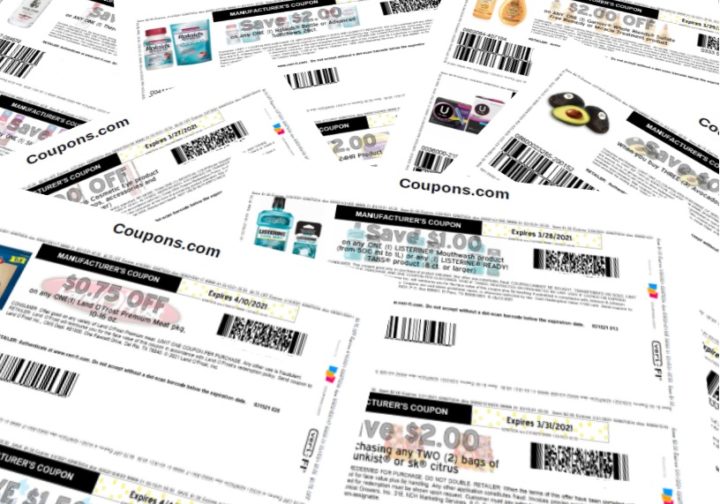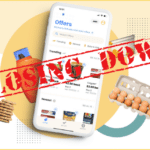
The long-running debate over the future of paper coupons has intensified over the past year, as the coronavirus pandemic has accelerated shoppers’ embrace of digital savings. But while some promotions professionals insist that paper coupons still have a future, one industry leader is doubling down on his prediction that paper coupons – and particularly the printable coupons his company is known for – will soon become as extinct as “the dinosaur and the dodo bird.”
Coupons.com owner Quotient Technology made waves last fall when it introduced cash-back offers and redesigned its mobile app to feature the new paperless offers more prominently, relegating the printable coupons that were once front-and-center to a separate section behind a few menu options. Together with the load-to-card coupons that Quotient already offers, the introduction of another paperless savings option seemed to support Quotient’s persistent predictions that digital is the future – and that the printed paper coupons that put it on the map more than two decades ago, is past.
“Coupons.com started long before smartphones and NFC chip-enabled credit cards paved the way for a contactless world,” Quotient CEO Steven Boal told Coupons in the News. “We used the incredible technology that was available at the time to provide consumers with the freedom and flexibility to easily print coupons at home instead of having to hunt for them in the Sunday paper. We are in a much different world now, however. The future isn’t in physical coupons – it’s in digital.”
It was more than six years ago when Boal first began publicly envisioning a world without paper coupons. “Over time, we’d love to see consumers go completely paperless,” he said back in 2015. “But that’s over many, many years.”
Not so many, many years later, Boal was confident enough in his prediction that he assigned paper coupons an expiration date. “The printed coupon will be gone in 18 months,” he declared last summer. And even as that expiration date fast approaches, Quotient is sticking to its prediction. “We expect digital coupons to completely replace the traditional print free-standing insert (FSI) in 2022,” a recent Quotient publication stated.
So where does that leave print-at-home coupons? Apart from having the ability to persuade brands to change how they promote their products, Quotient doesn’t have any direct control over the future of printed coupon inserts. But it has plenty of control over the future of printables. As the last major print-at-home coupon provider, Quotient could just about single-handedly sign the format’s death certificate, simply by pulling the plug on its printable offerings in favor of its new cash-back offers and digital coupons. And that seems to be the direction in which we’re headed.
“The short answer is yes, paper coupons, which include print-at-home coupons, will go the way of the dinosaur and the dodo bird before too terribly long,” Boal said. “Go to any grocery store and take a close look at how consumers are shopping. You don’t see people reach into their pocket, grab a stack of coupons, fish through them, hand over the ones they want to use, and then grab their phone and pay digitally. That just doesn’t happen. People are moving to a digital place.”
That became especially true over the past year, as the coronavirus pandemic changed seemingly everything about our shopping habits. With shoppers more concerned about grabbing what they needed safely and efficiently than they were about clipping coupons, and retailers and manufacturers more concerned about keeping shelves stocked than they were about promoting their products, coupon distribution and redemption both plummeted last year.
But digital coupons plummeted less, and were quicker to recover. According to Inmar Intelligence, for the very first time last summer, shoppers used more digital coupons than newspaper insert coupons. From March through October, Quotient says there was a 21.4% increase in total digital paperless coupon activations compared to the previous year. And according to the latest figures from Kantar, paper coupon distribution lagged throughout 2020, while digital coupon distribution bottomed out in April but had largely returned to pre-pandemic levels by August.
“That kind of speed and flexibility is key during events such as COVID-19,” Quotient explains – the kind of speed and flexibility that paper coupon campaigns can’t match.
“With print newspaper circulation continuing to decline, and free standing insert usage nowhere near what it used to be, there’s nowhere else for them to go,” Boal said. “They served their purpose for many generations, but they don’t offer the same benefits in a digital world.” The growth of digital coupons, digital cash-back offers and other paperless savings options “is yet another nail in the coffin for free-standing inserts, which cannot be saved to a phone, accessed online or loaded onto a retail rewards card,” Boal continued. “They don’t provide the level of convenience and simplicity we all crave.”
Proponents of paper point out that paper coupons are not limited to just those that appear in the Sunday newspaper. There are other types of printed coupons that are not as easily replicated by digital coupons – like “peelies” attached to product packaging, coupons handed out in stores and coupons printed on your paper receipt, which Quotient itself now offers. So the decline in newspaper insert coupon distribution and redemption doesn’t necessarily spell imminent doom for paper coupons altogether.
But with few coupon providers other than Coupons.com offering a large selection of print-at-home coupons anymore, the future of that particular paper format could be largely up to Quotient to determine. And Boal is making his position on printables quite clear.
“We want to offer consumers the safest, most convenient way to save, and that’s anchored by digital solutions that don’t require shoppers to use paper coupons,” Boal said. While digital load-to-card coupons are limited by the fact that they must be activated and redeemed at a specific retailer, Quotient’s cash-back offers can be redeemed wherever you shop, even online. The same goes with universal digital coupons that the industry is in the process of developing. Once you can use your phone or computer to clip a coupon that’s redeemable anywhere you shop, there will be little need to print it out onto a piece of paper anymore.
So the jury is still out about whether the printed coupon will really completely disappear within the next year. But when the leading printable coupon provider says printable coupons are about to go the way of the dodo, that’s one prediction not to be taken lightly. If you consider when the last time was that you wrote and mailed a letter, filled out a paper check or handed your cashier paper money, then saving on your groceries by using paper coupons that you printed yourself may soon become just as outmoded – before you know it.
















I would hate to see paper coupons go, although they haven’t been of no use lately. Only if you like a lot of hair items and make-up- not many food coupons like it use to be. I would not care for the digital ones- that would be too many apps on my phone!
Also it’s bye-bye to Bi-Lo after 50 years. They would double up to 60 cents and do a 5% senior discount on Wednesday. In South Carolina- Food Lions are taking over most Bi-Lo’s -but they don’t even double coupons.
I would like to add that Roses does not take internet coupons-only manufacture ones. They also have senior day on Wednesday of 10%. So if paper coupons go away- it will be more dollar store shopping for me!
To Susan’s point, one of the things these so-called industry leaders continually fail to understand is that a large segment of society desires to see the paper coupon scanned and the discount applied to their total. Or conversely, if the paper coupon doesn’t scan, they can remediate the transaction (not purchase the item, go find the right item, cashier override, etc.). These options don’t exist with digital and consumers often don’t know whether all the digital offers they “clipped” were actually applied to the transaction.
I hate the idea of the loss of a paper option for couponing. Not everyone is comfortable with every purchase they make and every place they visit being tracked with a digital device. I am one of those DoDo birds mentioned in the article: I use paper checks, I use cash, and I most certainly use paper coupons. And I’m not some Neanderthal, unable to use current technology. I think the digital option is actually more complicated at times, but maybe that’s just me. Sad to see this inevitable change coming.